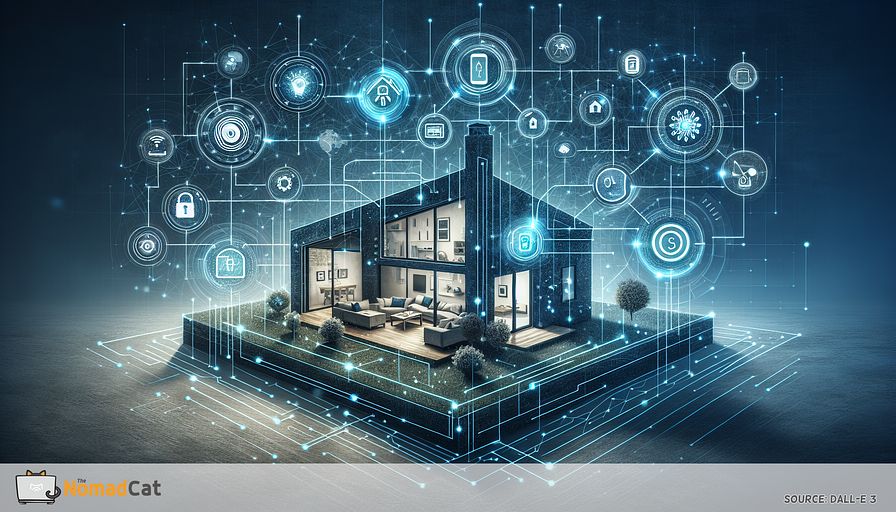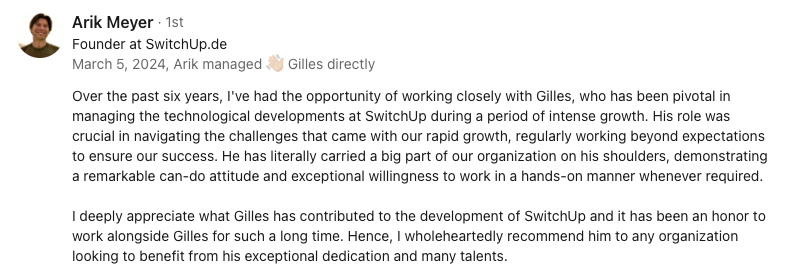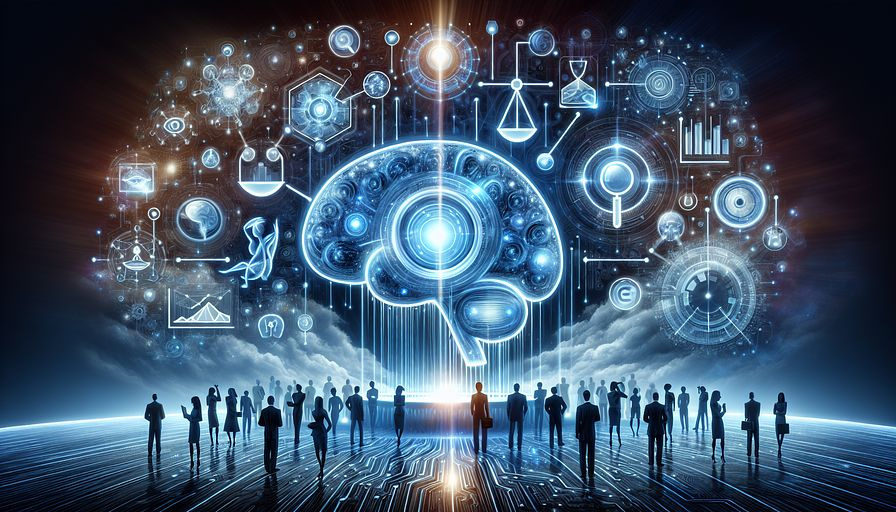Abstract:
The transformation of houses into smart homes through the integration of IoT technology is not just changing the way we interact with our living spaces, but also drastically enhancing our quality of life. This evolution allows homeowners to control various aspects of their home environment with unprecedented ease and efficiency. From optimizing energy consumption through intelligent heating and cooling systems to enhancing home security with smart locks and surveillance cameras, IoT devices offer a level of convenience and safety that was unimaginable just a few years ago. Moreover, the ability to manage all these interconnected devices from a single interface, often via a smartphone app, signifies a major step forward in making our homes more responsive to our needs and sustainable for the future. This article explores how smart home technology is shaping the future of domestic living, making our daily routines more comfortable and giving us greater control over our personal spaces.
introduction to IoT in smart homes
Smart homes have become a cornerstone of modern living, driven by the revolution of Internet of Things (IoT) technology. This transformation has marked a new era in domestic life, bringing unprecedented levels of convenience, efficiency, and security. With IoT, the dream of seamlessly interconnected living environments has become a reality, captivating the imaginations of tech enthusiasts and homemakers alike.
Picture a household where everything from lighting to heating systems operates effortlessly through integrated smart devices. This new wave of living isn't just about the gadgets; it's about fundamentally improving the quality of life by automating mundane tasks and giving homeowners greater control over their environment. The appeal of such a lifestyle has led to a surge in consumer interest, making smart home systems one of the most sought-after upgrades.
From smart thermostats that learn your preferences to intelligent security systems that keep your home safe, the applications of IoT are varied and increasingly sophisticated. Homeowners are embracing these advancements, seeking to create environments that are not only more functional but also more responsive to their needs. This growing trend points toward a future where technology and home life are more intertwined than ever before, promising a blend of comfort, efficiency, and peace of mind.
energy efficiency and automation
Smart homes are revolutionizing energy efficiency, thanks to the incredible capabilities of IoT technology. Imagine walking into a house where your heating and cooling systems are smart enough to learn your daily routines and adjust themselves accordingly, all in the name of saving energy. This isn't just a futuristic fantasy; it's happening right now in homes outfitted with the latest IoT devices.
One of the most significant benefits of IoT-enabled smart homes is their ability to optimize energy usage. Smart thermostats, for example, can learn your schedule and preferences to automatically adjust the temperature settings when you're home, away, or asleep. This not only ensures a comfortable living environment but also helps reduce energy consumption by preventing unnecessary heating or cooling. Nest's line of smart thermostats is a prime example, with users reporting substantial savings on their energy bills.
Automation plays a crucial role in enhancing energy efficiency. Smart lighting systems, for instance, can detect when a room is unoccupied and switch off the lights, ensuring that no energy is wasted. These systems can be integrated with motion sensors and scheduled timers, offering a seamless experience that requires minimal manual intervention. Moreover, smart plugs and power strips can cut off power to devices that are not in use, further contributing to an eco-friendly home.
The benefits of these technologies extend beyond just cost savings. By reducing energy consumption, smart homes also lower their carbon footprint, making them more sustainable and environmentally friendly. This is particularly appealing to homeowners who are conscious of their impact on the planet and are looking for ways to make more responsible choices. The ecological advantages coupled with the convenience are driving many to adopt these systems.
Real-world examples illustrate the effectiveness of this technology. Homeowners who have installed smart meters, for example, find it easier to monitor their energy usage in real-time and make informed decisions. Some have reported up to a 20% reduction in their utility bills soon after implementing these systems. The combination of financial benefits, convenience, and environmental responsibility makes a compelling case for integrating smart IoT solutions into modern homes.
Overall, IoT-enabled smart homes offer a win-win solution by marrying cutting-edge technology with sustainable living practices. They bring unparalleled convenience by automating daily tasks and optimizing energy usage, showing us all that living efficiently doesn't mean compromising on comfort or convenience.
enhanced security features
The security aspect of smart homes has seen impressive advancements with the integration of IoT technology. Homeowners are now equipped with an unprecedented level of safety, thanks to devices like smart locks, surveillance cameras, and integrated security systems that work seamlessly together.
One of the standout features of smart security is the ability to control and monitor access to your home remotely. Smart locks, for example, allow you to lock or unlock doors using your smartphone. You can even create temporary access codes for guests or service personnel, eliminating the need for physical keys. This not only enhances convenience but also adds an extra layer of security. According to Jane, a homeowner, "After installing smart locks, I feel much more secure knowing I can control who enters my house even when I'm not there."
Coupled with smart locks, IoT-powered surveillance cameras provide real-time video feeds that can be accessed from anywhere. Modern-day cameras come with advanced features like motion detection, night vision, and even facial recognition. These functionalities significantly improve the ability to monitor your home, both inside and out, catching any unusual activities promptly. Anecdotal accounts from users frequently highlight how such systems deter potential intruders. For instance, John, another homeowner, shared, "Seeing the camera's red light was enough to scare off a would-be intruder. I received an alert and could act immediately."
Another crucial element in this robust security setup is the integration of advanced alarm systems. These systems can be synced with your smart devices, providing instant notifications in the event of a security breach. Some setups include smoke detectors, carbon monoxide sensors, and even water leak detectors, ensuring comprehensive protection. The peace of mind offered by these advancements is invaluable, as illustrated by Sarah, who stated, "Knowing that my security system will alert me to everything from break-ins to fire hazards makes me feel so much safer."
To sum it up, IoT-driven security solutions offer homeowners a sense of control and assurance that was previously unattainable. The combination of smart locks, high-tech cameras, and integrated alarms creates a security network that's both efficient and user-friendly. By adopting these innovations, homes become not just smarter but also safer, providing an environment where families can truly relax and enjoy their personal sanctuaries.
centralized and unified control
One of the most transformative aspects of IoT in smart homes is the ability to manage all interconnected devices through a single interface, often a smartphone app. This feature offers unparalleled convenience, making it possible to control everything in your home from one central hub. The significance of this unified control cannot be overstated, as it greatly simplifies the user experience and enhances day-to-day living.
Imagine waking up and adjusting the thermostat, opening the blinds, and starting the coffee maker—all with a few taps on your smartphone. This level of centralized control streamlines your morning routine, allowing you to focus on what truly matters. Similarly, at night, you can ensure that all lights are off, doors are locked, and the security system is armed, all from the comfort of your bed. This convenience extends to when you're away from home, offering remote access to control and monitor your household devices.
Unified control not only enhances convenience but also makes your home more responsive and adaptive to your needs. For instance, many systems are equipped with voice control, enabling you to manage devices through simple voice commands. This integration can be particularly beneficial for accessibility, helping individuals with mobility issues to interact with their home environment effortlessly. Systems like Amazon Alexa and Google Home are excellent examples of how voice control is seamlessly woven into smart living.
This centralized management also paves the way for smart home ecosystems to communicate effectively, creating a more intuitive and harmonious living space. By automating routine tasks and offering swift adjustments based on user preferences, the home environment becomes both dynamic and responsive. In sum, the ability to control all your smart devices from a central interface not only revolutionizes home management but also elevates the quality of life, setting a new standard for domestic bliss.














